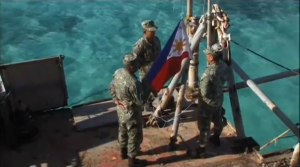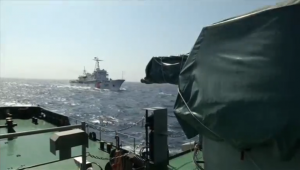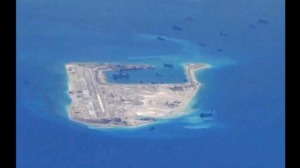 JULY 7 (Reuters) — China’s claim to the disputed South China Sea will come under international legal scrutiny for the first time this week, after Philippines filed the case at a U.N. tribunal.
JULY 7 (Reuters) — China’s claim to the disputed South China Sea will come under international legal scrutiny for the first time this week, after Philippines filed the case at a U.N. tribunal.
Manila’s international legal team has gone to the Permanent Court of Arbitration in The Hague to initially argue that the five-judge panel has jurisdiction to hear the case, Philippines Foreign Ministry officials told Reuters.
That is because of concerns China raised in a public position paper in December about the tribunal’s jurisdiction over the matter, according to court statements.
A little-noticed decision by the tribunal’s panel in April acknowledged China’s objections and announced that a hearing on jurisdiction from July 7-13 would be held first.
Manila filed the case in 2013 to seek a ruling on its right to exploit the South China Sea waters in its 200-nautical mile exclusive economic zone (EEZ) as allowed under the U.N. Convention on the Law of the Sea (UNCLOS).
China claims most of the South China Sea, through which $5 trillion in ship-borne trade passes every year.
The Philippines, Vietnam, Malaysia, Taiwan and Brunei also have overlapping claims.
The case is being closely watched by Asian governments and Washington given rising tensions in the South China Sea, especially in the Spratly archipelago, where China is creating seven artificial islands that will allow its navy to project power deep into the maritime heart of Southeast Asia.
 Washington has vowed to keep up air and sea patrols in the South China Sea amid concerns among security experts that China might impose air and sea restrictions in the Spratlys once it completes work on its seven artificial islands.
Washington has vowed to keep up air and sea patrols in the South China Sea amid concerns among security experts that China might impose air and sea restrictions in the Spratlys once it completes work on its seven artificial islands.
China has said it had every right to set up an Air Defence Identification Zone in the South China Sea but that current conditions did not warrant one.
The territorial dispute is seen by many as one of Asia’s most dangerous hot spots, posing risks that it could result in conflict as countries stake their claims









